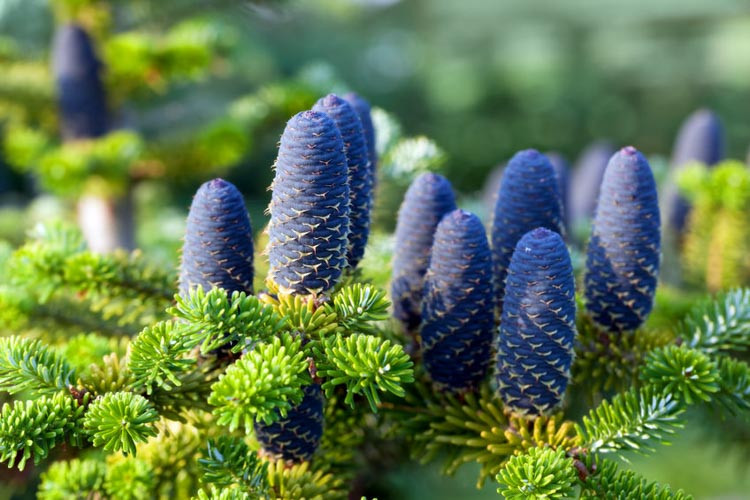Abies (Fir)
Abies, commonly known as fir trees, are a genus of evergreen conifers admired for their majestic heights, symmetrical shapes, and fragrant foliage. They are a central feature of many landscapes and are particularly appreciated during the winter season.
- Habit: Abies species are characterized by their upright, conical habit, and their branches are generally whorled, giving them a distinct tiered appearance. They have a uniform and symmetrical growth habit that becomes more pronounced as they mature. Fir trees can range significantly in height depending on the species, with some dwarf varieties reaching around 6 feet (1.8 meters) and larger species towering over 200 feet (60 meters).
- Hardiness: Fir trees are generally hardy and adaptable, although their hardiness varies by species. Most thrive in USDA zones 4 to 7, though some species can tolerate colder or warmer climates. They prefer cooler temperatures and higher elevations and are often found in mountainous regions.
- Foliage: Fir trees are known for their needle-like leaves, typically soft to the touch, unlike many other conifers. The foliage is often aromatic, especially when crushed, releasing a refreshing, pine-like scent. The leaves are usually a vibrant green but can also be blue-green or silver, depending on the species.
- Cones: Abies species produce upright cones that disintegrate on the tree rather than falling to the ground intact. These cones can be quite decorative, adding another layer of interest to the tree.
- Uses: Fir trees have numerous uses in the landscape. They are commonly planted as specimen trees or in rows to form windbreaks or privacy screens. Their symmetrical shape and dense foliage make them popular as Christmas trees. Some smaller or dwarf varieties are suitable for smaller gardens or containers.
- Benefits: Abies trees provide numerous ecological benefits. They offer habitat and food for wildlife, from birds to small mammals. Their dense foliage can help reduce noise pollution, and their large size makes them effective at sequestering carbon.

